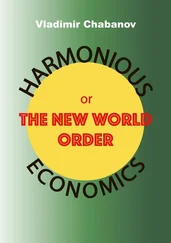Around this time, some important international agreements were signed that signalled a new era of global integration. In 1994, the NAFTA (North American Free Trade Agreement) was signed between the US, Canada and Mexico. It was the first major free-trade agreement between developed countries and a developing country. In 1995, the Uruguay Round of the GATT talks was concluded, resulting in the expansion of the GATT into the WTO (World Trade Organization). The WTO covers many more areas (e.g., intellectual property rights, such as patents and trademarks, and trade in services) and has more sanctioning power than the GATT did. Economic integration progressed further in the EU, with the completion of the ‘Single Market’ project (with the so-called ‘four freedoms of movement’ – of goods, services, people and money) in 1993 and with the 1995 accession of Sweden, Finland and Austria. [60] Being ‘neutral’ countries in the Cold War, these countries had kept their distance from the EU, despite being in Western Europe.
The combined result was the creation of an international trading system that was much more geared towards freer (although not entirely free) trade.
Also the idea of globalization emerged as the defining concept of the time. International economic integration of course had been going on since the sixteenth century, but according to the new globalization narrative, this process has reached an entirely new stage. This was thanks to the technological revolutions in communications (the internet) and transportation (air travel, container shipping), which were leading to the ‘death of distance’. According to the globalizers, countries now had no choice but to embrace this new reality and fully open up to international trade and investments, while liberalizing their domestic economies. Those who resisted this inevitability were derided as the ‘modern Luddites’, who think they can bring back a bygone world by reversing technological progress (see above). Book titles like The Borderless World , The World Is Flat and One World, Ready or Not summed up the essence of this new discourse.
The beginning of the end: the Asian financial crisis
The euphoria of the late 1980s and the early 1990s didn’t last. The first sign that not everything was fine with the ‘brave new world’ came with the financial crisis in Mexico in 1995. Too many people had invested in Mexican financial assets with the unrealistic expectation that, having fully embraced free-market policies and having signed the NAFTA, the country was going to be the next miracle economy. Mexico was bailed out by the US and the Canadian governments (who didn’t want a collapse in their new free-trade partner) as well as by the IMF.
In 1997, a bigger shock came about with the Asian financial crisis. A number of hitherto successful Asian economies – the so-called ‘ MIT economies’ (Malaysia, Indonesia and Thailand) and South Korea – got into financial troubles. The culprit was the bursting of the asset bubbles(asset prices rising well above their realistic levels, based on unrealistic expectations).
While they had been more cautious than other developing regions in opening up their economies, these countries opened up their financial markets quite radically in the late 1980s and the early 1990s. Now facing fewer restrictions, their banks borrowed aggressively from the rich countries, which had lower interest rates. In their turn, the rich-country banks saw little risk in lending to countries with decades-long excellent economic records. As more foreign capital flowed in, asset prices went up, which enabled firms and households in the Asian countries to borrow even more, using their now more valuable assets as collateral. Soon the process became a self-fulfilling prophecy, as the expectation of ever-rising asset prices justified further borrowing and lending (sounds familiar?). When it later became clear that those asset prices were unsustainable, money was pulled out, and financial crises ensued.
The Asian crisis left a huge scar in the afflicted economies. In economies where 5 per cent growth (in per capita terms) was considered a ‘recession’, output fell in 1998 by 16 per cent in Indonesia and 6–7 per cent in the other economies. Tens of millions of people were thrown out of work in societies where unemployment means penury, given the small size of the welfare state.
In return for the bail-out money from the IMF and the rich countries, the crisis-stricken Asian countries had to accept a lot of policy changes – all in the direction of liberalizing their markets, especially their financial markets. While it pushed the Asian economies themselves on in a more market-oriented direction, the Asian crisis – and the Brazilian and the Russian crises that immediately followed it – actually planted the first seed of scepticism about post-Cold War free-market triumphalism. There were serious discussions about the need to reform the global financial system, much of them along the same lines as the ones that we have seen following the 2008 global financial crisis. Even many leading advocates of globalization – like the Financial Times columnist Martin Wolf and the free-trade economist Jagdish Bhagwati – started questioning the wisdom of allowing free international capital flows. All was not well with the new global economy.
The false dawn: from the dot.com boom to the Great Moderation
When these crises were brought under control, talk of global financial reform receded. In the US, a major push in the other direction came in the form of the 1999 repeal of the iconic New Deal legislation, the 1933 Glass-Steagall Act, which structurally separated commercial banking from investment banking.
There was another moment of panic in 2000, when the so-called dot.com bubble – in which internet-based companies with no prospect of generating any profit in the foreseeable future had their shares valued at absurdly high levels – burst in the US. The panic soon receded, as the US Federal Reserve intervened and cut interest rates aggressively and the central banks of other rich economies followed suit.
From then on, the early years of the millennium seemed to be going swimmingly well in the rich countries, especially in the US. Growth was robust, if not exactly spectacular. Asset prices (prices of real estate, company shares and so on) seemed to be going up forever. Inflation remained low. Economists – including Ben Bernanke, the chairman of the Federal Reserve Board between February 2006 and January 2014 – talked of the ‘Great Moderation’, in which the science of economics had finally conquered boom and bust(or the economy going up and down by large margins). Alan Greenspan, the chairman of the Federal Reserve Board between August 1987 and January 2006, was revered as the ‘Maestro’ (as immortalized in the title of his biography by Bob Woodward of Watergate fame) who had a near-alchemical skill in managing a permanent economic boom without stoking inflation or courting financial trouble.
During the middle years of the 2000s, the rest of the world finally started to feel the ‘miracle’ growth of China of the preceding two decades. In 1978, at the beginning of its economic reform, the Chinese economy accounted for only 2.5 per cent of the world economy. [61] China’s output in 1978 was around $219 billion. World output in that year was about $8,549 billion. Calculated from World Bank, World Development Report 1980 (Washington, DC: World Bank, 1980), pp. 110–11, table 1.
It had minimal impact on the rest of the world – its share of world merchandise (goods) export was a mere 0.8 per cent. [62] Ibid., pp. 124–5, table 8.
By 2007, the corresponding numbers had risen to 6 per cent and 8.7 per cent. [63] China’s GDP in 2007 was $3,280 billion. World GDP was $54,347 billion. World Bank, World Development Report 2009 (New York: Oxford University Press, 2009), pp. 356–7, table 3. China’s merchandise export was $1,218 billion, while that for the world was $13,899 billion (ibid., pp. 358–9, table 4).
Being relatively poorly endowed with natural resources and growing at breakneck speed, it started sucking in food, minerals and fuel from the rest of the world, and the effect of its growing weight was felt more and more strongly.
Читать дальше












